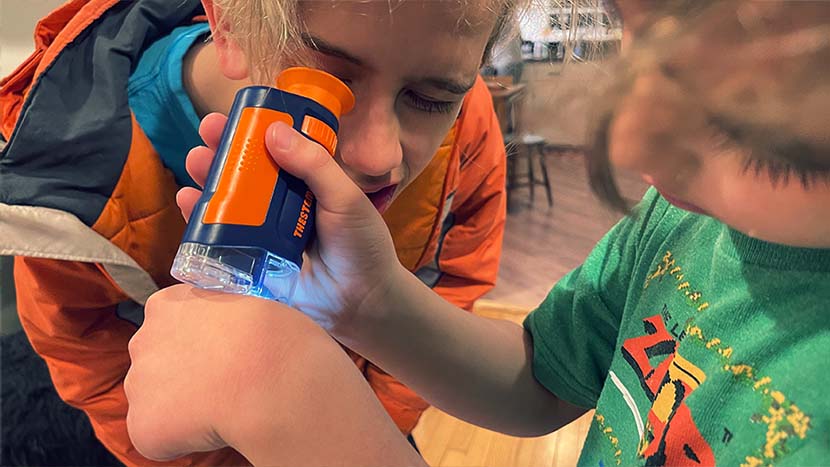The Right Kind of Toys can Change a Child’s Future, Here’s How
We often deduce a person’s future trajectory through their educational strands and career choices. But in reality, influencing the future outcome goes way before people even step foot in school.
It’s often overlooked, but tons of research have agreed on the impact of toys on a child’s development. Today, we’ll discuss how the right kind of toys is also instrumental in steering a child’s future in the right direction.

So what’s the deal with toys?
Children learn and facilitate their adaptation to the world by learning through play — not by reading textbooks.
Toys are one of the pillars of childhood. It’s where they learn conflict resolution, understand cause-and-effect, establish & abide by rules, most of all, develop cognitive skills that they carry over to adulthood.
But not all toys are made equally. By that, I don’t mean that some toys are better because they talk with one pull of a string, and others are simple wooden building blocks. Instead, a toy’s level of influence on a child varies from one toy to another.
Some toys may entertain kids for a while, like a battery-powered robot that dances with one button press. In contrast, other toys are timeless and evergreen. This means kids can use them indefinitely for creative amusement, like Legos or a microscope.
The difference is that the former may be fun for a short period, but they immediately lose value once kids discover what the toys can do. On the other hand, the latter are stepping stones or instruments to exercise children’s imagination, wanderlust, and inquisitive qualities.
These toys have many names: STEM/STEAM toys, educational toys, but I’d like to call them open-ended toys.
Naturally, this class of toys is the one instrumental in shaping a child’s future, and here’s how!
How can the right kind of toys influence a child’s future?
Steep Learning Curve from Ages 2-7
Ages 2-7 is the phase where a person’s brain absorbs all information it receives, like a sponge. Such is the case why children are fast learners.
Kids, particularly babies & toddlers, can take in loads of information far more remarkable than adults can. Typically, older people’s brains ignore irrelevant information. But toddlers are not equipped to distinguish information that makes them highly suggestible when fed with potent and essential knowledge.
Some call it impressionable, but for me, the best term to describe it is receptive.
This immense level of receptivity is the exact reason why a human’s learning curve peaks at the age of 7 and declines steadily after that.
Ergo, using that period to expose children to toys and activities that inspire their imagination, ignite their curiosity, and widen the breadth of their interests are more likely to remain in them through the years.
Take Albert Einstein, for example. Yes, the intelligent Albert Einstein guy. His sister once confessed that young Einstein had a problem learning language, and experts feared he would struggle to learn.
One faithful day when Einstein was 5, his father gave him a peculiar gift — a compass. Although too early for Einstein’s understanding, the device became the foundation of his love for the sciences.
On the other hand, his pianist mother gave him a violin. And if you follow Einstein’s biography, you’d know how beautifully he played the instrument.
Although from very dissimilar fields, the two devices influenced Einstein distinctively and inspired him to pursue and excel in both because his parents inculcated the curiosity early in his lifetime.
That said, who knows if you give a microscope for kids to a child today that you’re subconsciously grooming them to become renowned microbiologists in the future. Or magnetic tiles, which may pave their way in pursuing careers in engineering.

Neuroplasticity
Another reason why the right kind of toys can be instrumental for a child’s future is because of neuroplasticity. In layman’s terms, it is the brain’s capacity for change.
Children’s brains have more plasticity than adults.
This means that their brains are hard-wired to discard unused information in a process called “synaptic pruning” and retain those facts deemed essential. In other words, the brain facilitates a “use-it-or-lose-it” system.
If fed with child-friendly, curiosity-piquing, and thought-inducing outlets like open-ended toys or other scientific exposures, kids may maintain these learnings and experiences to heart that can ultimately be building blocks for their future.

What should we do?
If you have the opportunity to influence a child that you love positively, open-ended STEM toys might do it for them. Expose them early to various fun learning outlets and see which inspires them the most, and cultivate their curiosity in that area.
Bottom line: The right kind of toys will always make an impact.
I’m not saying there is a direct correlation between the “type of toy” and the desired “career choice.” It would take lifelong research to support such a claim.
But we have to understand that a “desirable future” doesn’t denote a specific occupation. Instead, the desirable future of a child is one they choose wholeheartedly.
So, if you buy them toys that inspire a knack for learning and discovery, then trust that no matter where these kids go, they will always seek answers. And that’s the future we want.
References:
- https://ageofmontessori.org/why-your-childs-brain-is-like-a-sponge/
- https://wehavekids.com/parenting/How-Toys-Impact-Childrens-Development
- https://www.educationalplaycare.com/blog/why-educational-toys-are-important-to-a-childs-development/
- https://files.eric.ed.gov/fulltext/EJ1176006.pdf
- https://www.edutopia.org/article/why-ages-2-7-matter-so-much-brain-development
































































































